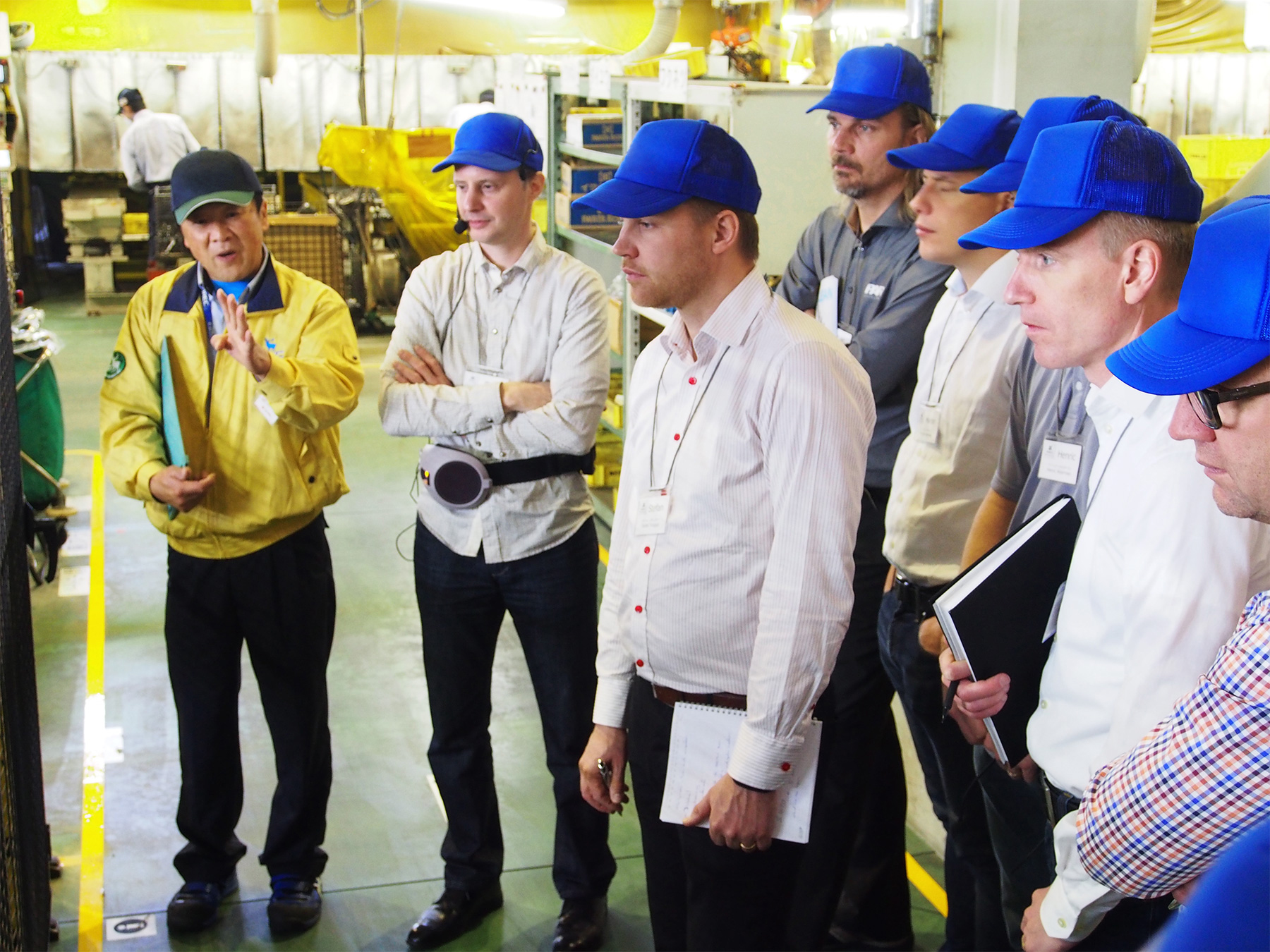Leader Standard Work

Most people think of Leaders and managers as the same thing and quite often Leaders take on the role of managers for various reasons in business. However, they are actually different hats – or different roles – sometimes filled by one person.
I will talk about leaders as the head of a division, department or company, but more often during this article, use the term Leader (capitalised) to describe behaviours by management at every level.
Leader characteristics
A leader is a role operating at a very high level in business and is looking for results in terms of KPIs – Key Performance Indicators – and they have their eye on strategy. They quite often set their KPIs for the business. Think of executives, managing directors and similar. The manager is someone who manages the work and the business in their department. They’re ensuring work improves, they hit KPIs and new ideas are implemented. The big difference between leader and manager in the traditional sense is that business leaders are more strategic than the others.
I think what is most important to realise is that the term “Leader” doesn’t just apply to the person at the top of the department or business. It’s an approach that managers, supervisors and team leaders can take as well. They have to put their Leadership hat on at different times when they’re at work. Supervisors or team leaders have the task of managing the team directly, but realistically, they need to be focused on removing waste from the process and shortening cycle time. This permits the team to conduct continuous improvement, manage variation and so forth. Much of the work of Lean and Kaizen implementation is a Leader approach by various levels of management within a business
Consistency
These three titles of management- leaders, managers and supervision- all need to have some element of Leadership in what they do, they need to be consistent in the way they act – that’s really important. So how is this consistency displayed?
- Consistency in behaviour – they need to be able to compliment teams in the workplace and show respect for what they do.
- Consistency in identification – they need to be able to identify when a target has been missed. They then need to be able to address those issues with the various levels of the business that are missing their targets.
- Consistency in approach – they need to be able to draw attention to issues in a proactive manner. If there is a problem in an area and the target is not being reached, quite often it’s not a matter of chastising that team supervisor or manager. It’s more important for a Leader in their role to say something like “I’m coming back next week to check in, so let’s see how you’ve improved by then.”
More on the approach for leaders
It’s really important for a leader to not inadvertently voice concrete decisions because when they voice their decisions, that’s where people’s focus goes. They must recognise that if they make a decision it eliminates all other options in the minds of the team. There may be other options that a leader has not yet considered. It is crucial within reason and relating to the support of Lean and Kaizen, that a leader does not make sweeping statements that can be interpreted as criticism by teams. At the end of the day that creates a different environment for the team. You don’t want your leader coming down to the Gemba and saying – “You should’ve got that job out or why is that job not finished? I see there is an issue over there with that job on the floor.” That is going to make the supervision in that area focus more on what that symptom is. It might actually not be the root cause or critical issue in the business. This behaviour by a leader is going to drive very reactive people in the business.
The leader is not the problem solver – Teams are
The leader doesn’t really know. They have experience and so forth, but it’s important for a leader to go into an area of the business prepared to be mindful of their sway. They need to be gentle on the questions to make sure that they are not unduly influencing the thinking of the team. They’ve got to let the team do the thinking about how they manage variation, problems or gaps. You are trying to encourage teams to cultivate Kaizen – continuous improvement with practical wisdom. If leaders are always coming in over the top and saying “You should do this and you should do that” you lose the practical wisdom that has the potential to impact on the flow in the business. They’ll react and just do what you told them.

Great Leaders focus on Standard Work.
What a Business Leader should do
A leader in the traditional sense is above the manager. They are the leader of a department, a division, or the business as a whole. When they talk to their managers they need to talk about their KPIs, because that’s what they’re driving. When they talk to their team leaders they need to be complimentary of progress the team is making, and asking them open-ended questions – “Is there anything else you are looking to improve?” For teams, they need to speak with them about their standard work, about their practice – “How is your standard work going? Are you folks practising your standard work and experimenting on how to improve it? Are there new ideas?” Not giving them ideas – asking them for ideas.
There are other behaviours a Leader needs to display regardless of their management level:
- Being mindful – identifying gaps between the actual situation and the target situation. Then taking a careful and restrained approach to questions asked around that.
- Go to the Gemba – the place of the work – to understand and observe. Develop and maintain an understanding of the rate at which problems are solved, so that the Leader does not push too little or too much. They always need to be asking themselves – “Are people in this area progressing towards our strategy?”
- Questions direct focus – put thought into what you are going to say as a Leader. If a leader has a continuous improvement specialist, like a Lean Coach or Consultant, that specialist will teach the leader how to focus the questions in the right manner. Of course, the person who is responsible for Lean in the business should report to the highest person in the business. They are the hands of the senior people. They are there investigating, coaching, guiding and helping teams to do more.
In summary
The supervisor, manager and leader of the business all have some level of Leadership to put in place.
- leader – with their team. They must seek to understand and ask questions that lead to Kaizen and change towards the KPIs that were put in place. “How can we make it better – how can we break the standard to make it better.”
- Manager – through monitoring and reporting on KPIs. They need to open doors and reduce roadblocks for their supervisors. They need to be the one running projects that generate improvements as well as facilitating problem-solving within the teams. They need to monitor and keep control of the standard work.
- A supervisor or team leader – they need to practice Kaizen – continuous improvement with practical wisdom. Always work towards their change goals, always challenging the standard work with their team.
Being a Leader is not a position, but a behaviour, exhibited by a consistent focus on Leader Standard Work.
I want to acknowledge friend and Lean practitioner role model Barry McCarthy for the inspiration to write my thoughts down on Leader Standard Work. His talked during the 2019 AME conference in Melbourne allowed me to form the basis of this article.
Reach out if you want to know more about how to create a culture of continuous environment in your workplace.
Check out our Capability Training options.
or
Book a discussion to find out how we can help your business.
Respect,
Daniel.
Subscribe for updates
We provide free updates and advice regularly to help you improve your business and leadership skills, and for exclusive content there is a paid subscription too!
Follow us on YouTube
Our YouTube channel is a must for Leaders in business who want to empower their teams and improve their processes. You'll find plenty of our current thinking there
Build your Capability with our Members Program

We do consulting differently, in that we believe in building your capability to improve - we want to provide you with the secrets to success, not keep it all to ourselves! Our exclusive Member Program coaches you to be a great Leader, to empower your people to drive improvement, and identify large gains in employee engagement, quality and performance.
Talk to a consultant
We love to have a chat. We also like to make sure we have time just for you. You can book a chat and we can discuss your continuous improvement journey. We are happy to provide as much obligation-free advice as we can during the call, including what would be the recommended next steps for you to take.

